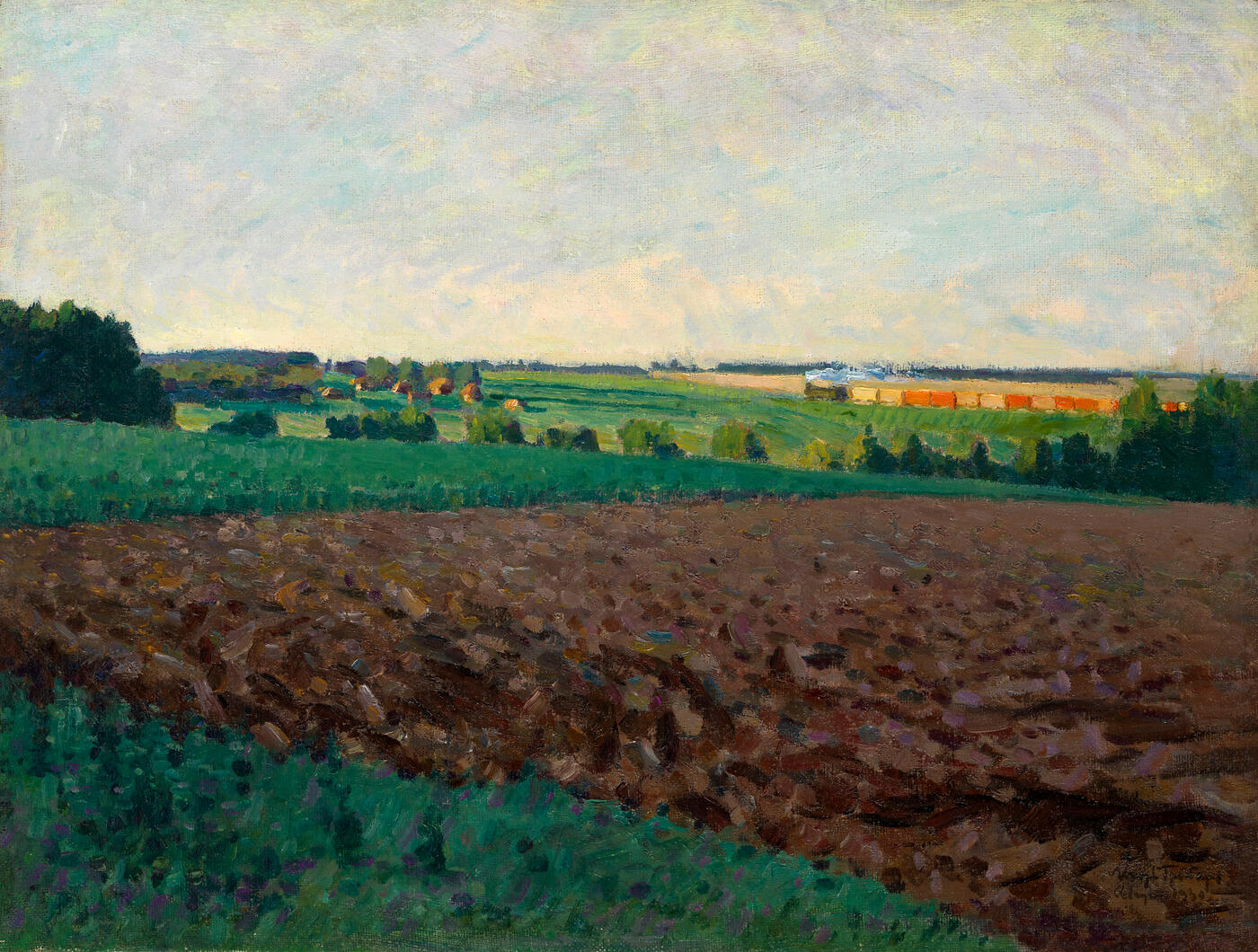25 - 28 November 2012 Russian Art Auctions
25 November 2012

* 178. GRABAR, IGOR (1871–1960)
Ploughed Field on the Gerold State Farm, signed and dated in Cyrillic “Avgust 1930”.
Oil on canvas, 57.5 by 76 cm.
200,000–300,000 GBP
Provenance: Collection of the artist’s family.
Art Fund of the USSR (label on the stretcher).
Private collection, Europe.
Authenticity of the work has been confirmed by the expert I. Gerashchenko.
Exhibited: Igor Grabar, The State Tretyakov Gallery, Moscow, 1936, No. 173.
Literature: Exhibition catalogue, Igor Grabar, Moscow, 1936, p. 17, No. 173, listed.
O. Podobedova, Igor Emmanuilovich Grabar, Moscow, Sovetskii khudozhnik, 1964, p. 332, listed.
Igor Grabar’s picturesque canvas Ploughed Field on the Gerold State Farm is a unique record of its time. Painted in 1930, this landscape came about as a result of an artists’ trip organised by the Soviet People’s Committee to the Gerold model farming commune near Moscow. From the cultural revolution that gripped the country during the first and second five-year plans flowed ideological commissions for works of art on the themes of revolutionary history, industry and agriculture to illustrate the young country’s achievements building socialism. Artists and writers were offered special thematic trips to factories, collective farms and scientific laboratories under the subject headings: “Industrialisation of Production”, “Science in the Service of Socialist Construction”, “Collectivisation of Farming”, “The Role of Industry in Socialist Remodelling of the Countryside” etc. A visit to the Gerold commune 50 kilometres from Moscow was especially recommended to illustrate development in the agricultural sector.
This commune was organised in the 1920s for repatriated Americans who had arrived in the USSR on a wave of revolutionary propaganda. Information on the Gerold commune, which was between Varybino and Belye Stolby stations, has been preserved among the documents of the Moscow Committee of the All-Union Communist Party (Bolsheviks): “There are 37 families and single people in the commune. The last 8 members of the colony are expected to arrive from America very soon. That makes 70 mouths to feed in all. All the members of the commune are Jews recently arrived from the USA and Canada. Almost all of them emigrated from the old Russia, lived in America for 10 to 20 years and are currently American citizens. They arrived in 1925: Group 1 in January, Group 2 in March, and Group 3 in May” (Moscow Central Archive of Public Movements, collection 3, inventory 11, file 269, sheet 3). The farming commune was renowned for its fine, well-lit cowshed for a hundred head of cattle, its large poultry house and incubator for eight thousand eggs and, above all, for its energetic introduction of farming technology “to replace the peasant’s nag”.
Things were going extremely well at the commune until the enforced introduction at the very beginning of the 1930s of collective farms. The members of the commune could not stand the expense of collectivisation. Many of them returned to the United States, some became victims of repression, and the remainder went off to join the Volga Germans or to the South. Gerold, together with the neighbouring Solidarnost’ commune of Swiss immigrants that shared its fate, was made into the Vas’kino state farm by the local authorities.
Grabar painted three pictures in 1930 as a result of his visit to the commune: Sick Cow. Gerold Commune, Portrait of the Commune Chairman, Comrade Schwartz, and the present landscape Ploughed Field. It is highly noteworthy that the social nature of the commission of the last canvas was expressed only in its title, which is in fact a natural scene in the Russian painting tradition, created by a distinguished master of Russian art.
Notes on symbols:
* Indicates 5% Import Duty Charge applies.
Ω Indicates 20% Import Duty Charge applies.
§ Indicates Artist's Resale Right applies.
† Indicates Standard VAT scheme applies, and the rate of 20% VAT will be charged on both hammer price and premium.